Credentialing in medical billing is an essential process that ensures healthcare providers get paid for the services they deliver.
It involves verifying the qualifications of physicians so they can join insurance networks. This guide breaks down what credentialing entails, why it matters, and related topics like contracting and enrollment.

What is Credentialing in Medical Billing?
Credentialing in medical billing refers to verifying a healthcare provider’s education, experience, license, and training. It confirms that providers meet the standards set by insurance companies and regulatory bodies. According to CAQH, using automated credentialing solutions can reduce manual work by up to 60%.
Without proper credentialing, providers may face claim denials or delays in payment. For example, completing credentialing allows physicians to treat patients under specific insurance plans without any reimbursement issues.
Types of Credentialing in Medical Billing
Credentialing needs vary depending on the healthcare setting:
| Type | Purpose |
|---|---|
| Provider Credentialing | Confirms a doctor’s qualifications and licenses. |
| Facility Credentialing | Ensures healthcare facilities meet payer standards. |
| Insurance Credentialing | Allows providers to bill insurance companies. |
These types focus on different requirements to help providers meet payer expectations.
What is Credentialing in Healthcare?
Credentialing in healthcare involves verifying the qualifications of both individual providers and organizations. It is crucial for billing insurers and getting payments. Providers who skip this process often face delayed claims. Over 85% of U.S. healthcare providers depend on credentialing, as highlighted by the American Medical Association.
Provider Credentialing: An In-Depth Look
Provider credentialing is a detailed process that focuses on verifying a healthcare professional’s qualifications. This involves checking educational background, training, licensing, and certifications. It ensures that providers meet the standards set by insurance companies and state regulations. Timely and accurate provider credentialing minimizes claim rejections and builds trust with payers. For more information, you can explore resources from AAPC.
Enrollment in Medical Billing
Enrollment in medical billing happens after credentialing and involves registering a provider with an insurance network. This enables providers to submit claims and receive reimbursements.
The enrollment process involves submitting documents, getting approvals, and completing network registration. For detailed guidelines, visit CMS Provider Enrollment.
What is Contracting in Medical Billing?
Contracting refers to negotiating agreements between healthcare providers and insurance companies. These contracts define the terms, conditions, and payment rates for services. Poorly negotiated contracts can result in reduced payments or delays. For expert advice on this, check Health Affairs.
Types of Credentialing in Healthcare
Credentialing in healthcare can be divided into the following categories:
| Credentialing Type | Focus Area |
| Primary Source Verification | Confirms credentials directly with issuing authorities. |
| Recredentialing | Updates previously verified credentials periodically. |
| Specialty Credentialing | Focuses on providers in fields like cardiology. |
Adhering to these categories ensures providers meet specialty-specific requirements.
Benefits of Credentialing in Medical Billing
Credentialing offers several advantages to both providers and patients. Providers experience faster claim approvals, while patients can rely on qualified professionals within their networks. Additionally, credentialing strengthens partnerships with payers. For more information, refer to NCQA.
Common Challenges in Credentialing
Credentialing comes with its own set of challenges:
Missing documents can cause significant delays.
Recredentialing requirements can be time-consuming.
Payer-specific rules often require careful compliance. For solutions, visit MGMA.
How to Improve Credentialing Efficiency
To make credentialing more efficient, providers can take these steps:
Keep Records Updated: Always maintain current credentials, licenses, and certifications. A checklist helps track renewals and avoid lapses.
Use Credentialing Software: Tools like CAQH ProView automate routine tasks, reducing manual errors and saving time.
Communicate Clearly with Payers: Dedicated contact points help resolve issues quickly, minimizing delays.
Work with Credentialing Experts: Outsourcing to credentialing specialists lightens the administrative load and speeds up the process.
Conduct Regular Audits: Periodic audits help identify gaps in documentation before they cause problems.
Train Administrative Teams: Providing training ensures that staff can handle documentation and follow-ups effectively.
Standardize Documentation Processes: Using consistent formats makes it easier to collect and submit accurate information.
Stay Updated on Payer Rules: Monitoring changes in payer requirements helps avoid compliance issues.
For more best practices, explore AAPC’s resources.
Conclusion
Credentialing in medical billing is an essential part of healthcare operations. It helps providers comply with payer standards and maintain a steady flow of claims. If you want to learn more about credentialing services, contact us.

